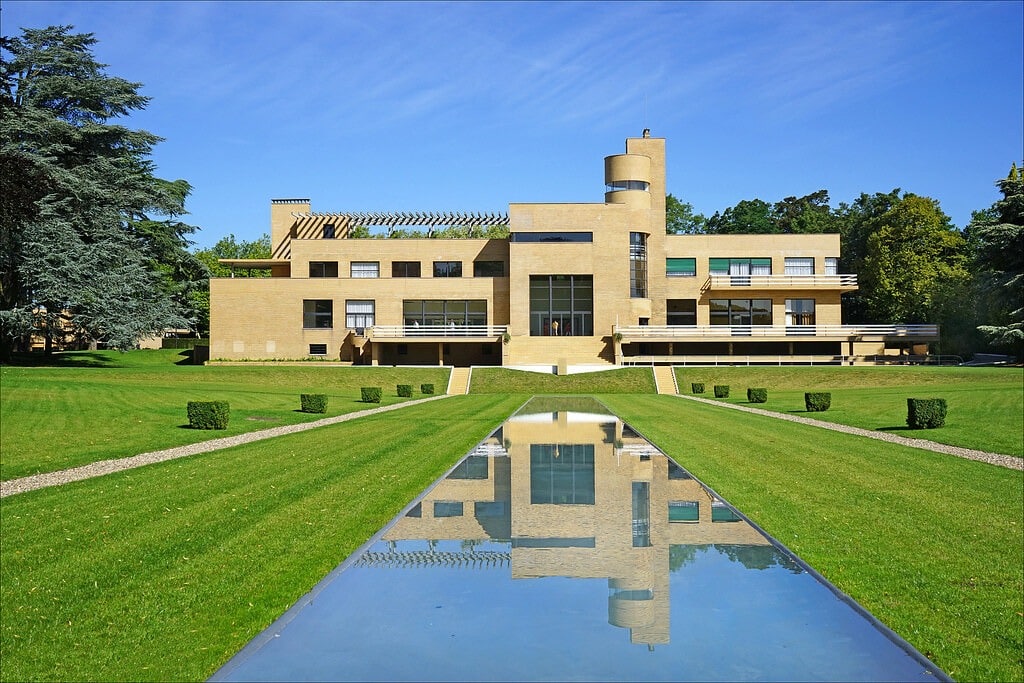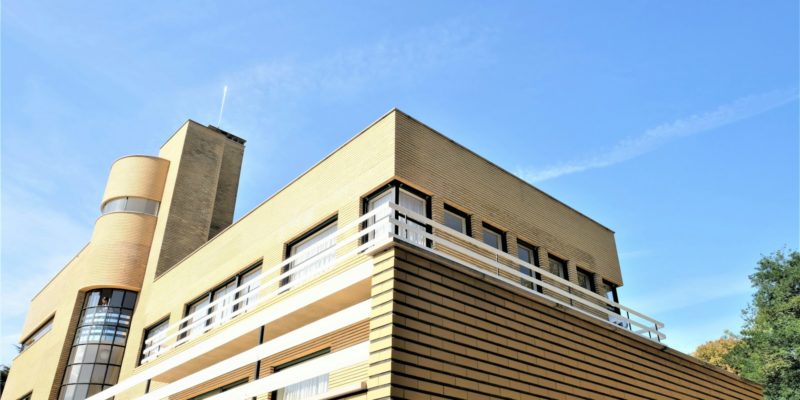The Villa Cavrois, located in Croix in the Nord department of France, is an architectural marvel worth exploring both for its rich history and its unique design. Built between 1929 and 1932 by architect Robert Mallet-Stevens, the house was commissioned by textile industrialist Paul Cavrois. Today, it stands not only as a prime example of modernist architecture, but also as a national monument open to the public.
A visionary project for this beautiful villa on Croix
The story of the Villa Cavrois is a fascinating one. Paul Cavrois, keen to create a modern home for his large family, turned to Robert Mallet-Stevens, attracted by his work at the 1925 Exposition Internationale des Arts Décoratifs et Industriels Modernes. The initial project, entrusted to Jacques Gréber, was eventually reoriented towards a more avant-garde vision. For the first time in his career, Mallet-Stevens was given carte blanche to carry out the project, enabling him to create a “total work of art”, integrating architecture and interior design. The villa was inaugurated in 1932, and its design is based on the principles of “air, light, work, sports, hygiene, comfort and economy”. These elements reflect the ideals of industrial modernism, promoting a healthy lifestyle integrated into the environment. The building, with its 2,800 m² of living space, vast terraces and nearly 18 hectares of parkland, has become a symbol of modernity and innovation.
A tumultuous history recounted on the tour
The Villa Cavrois has known both glorious and dark times. Occupied by the Germans during the Second World War, it was subsequently modified in 1947 to accommodate the families of Paul Cavrois’ sons. After the death of Lucie Cavrois in 1985, the villa was sold and then abandoned, during which time it was vandalized and looted. The mobilization of a preservation association and the classification of the villa as a historic monument in 1990 were crucial to its preservation. The French government purchased the property in 2001 and launched a vast restoration program, returning the villa to its 1932 state and reopening it to the public in 2015.

The south façade of the Villa Cavrois
Revolutionary architecture accessible to the public
The Villa Cavrois, designed by Robert Mallet-Stevens, is a veritable icon of modernist architecture in northern France, spectacularly illustrating the principles of this architectural movement. With its clean lines and vast expanses of glass, the villa stands out from the traditional buildings of its time. This open, airy design was intended to maximize the entry of natural light, creating bright, welcoming interiors. The absence of superfluous decoration underlines the modernist mantra of “less is more”, where form follows function. The villa’s technical innovations, such as centralized hot water systems and integrated loudspeakers, offer modern comfort remarkable for its time, while indirect lighting, designed to mimic daylight, creates a soft, even ambience, reducing eyestrain and enhancing occupants’ well-being.
The materials chosen for the construction and decoration of the Villa Cavrois are not only aesthetically pleasing but also functional, reflecting a particular attention to quality and durability. Reinforced concrete, an avant-garde choice at the time, provides a solid structure while allowing flexibility in architectural design. The extensive use of glass not only increases the amount of natural light, but also reinforces the visual link between the interior and the vast surrounding gardens. The different types of marble used, from the green Swedish marble in the master dining room to the yellow Sienna marble in the entrance hall, add a touch of luxury and sophistication, while the various woods, such as zingana and Cuban mahogany, are employed for their beauty and strength, illustrating the careful hierarchical organization of the living spaces.
In addition, Mallet-Stevens’s own furniture design ensures that each piece of furniture not only adapts perfectly to the space for which it is intended, but also meets the functional needs of the users. This holistic approach to interior design ensures aesthetic and functional continuity, with each element contributing to the overall harmony of the home. The Villa Cavrois is therefore more than just a home; it is an immersive experience where every detail, from the layout of the rooms to the selection of materials, has been thought through to create an optimal environment for its inhabitants, making it an exemplary model of modernist architecture accessible to the public.
Location and entrance fees
Nestled at 60 avenue du président John-Fitzgerald-Kennedy in Croix, this historic residence is easily accessible by public transport, thanks in particular to the Villa Cavrois station on tramway line R, adding convenience for visitors without a car. Free parking is also available nearby, at the Restaurant Centre Equestre Le Comte, offering a convenient solution for those who prefer to travel by personal vehicle. The villa’s location :
With regard to entrance fees, the Villa Cavrois offers affordable prices to enable a wide audience to discover this masterpiece of modernist architecture. The standard individual rate is 11 euros, but there are also twin ticket options with other local attractions, such as Musée La Piscine and La Manuf, for a broader cultural experience. In addition, the villa offers a number of free admission conditions; for example, access is free for all on the first Sunday of January, February, March, November and December. Other exemptions apply to young people under 18, European Union citizens aged 18 to 25, disabled people with an accompanying adult, jobseekers, and holders of the Pass Éducation Nationale. These initiatives make visiting the Villa Cavrois even more attractive and affordable, and encourage cultural and historical discovery by a diverse public.
To conclude
Visiting the Villa Cavrois is not just a stroll through a historic monument; it’s an immersion in an era when art and architecture merged to create innovative, harmonious living spaces in the same way as the Piscine in Roubaix, for example. It’s also an opportunity to understand the challenges of preserving architectural heritage, and to celebrate the success of the restoration efforts that now enable this heritage to be shared with the public. The Villa Cavrois is undoubtedly a must-see destination for lovers of architecture, history and design.
R.C.
